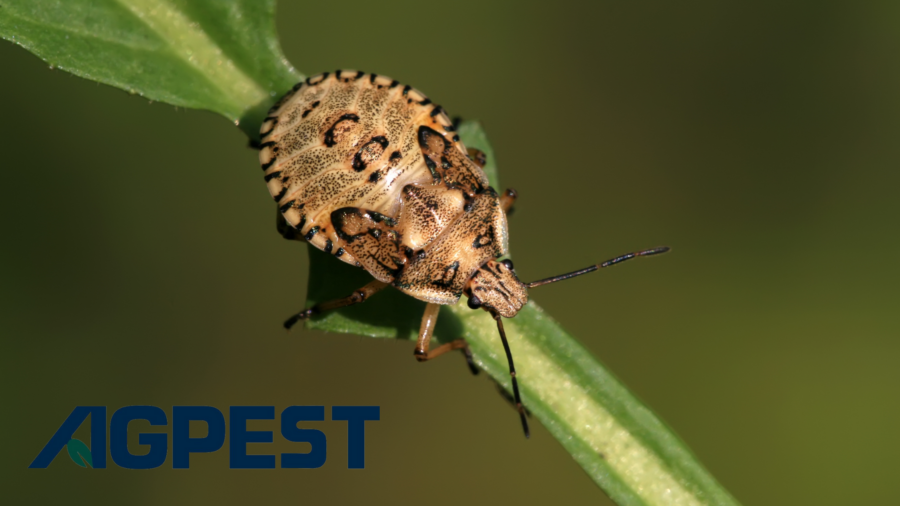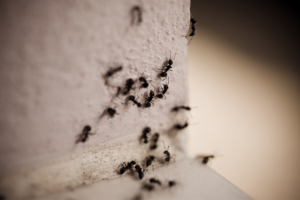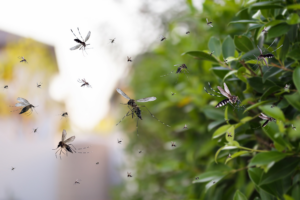As the weather cools in early fall, many pests begin to seek shelter in homes to survive the winter months. These pests, known as overwintering pests, can cause significant discomfort and damage if left unchecked. In San Diego, mild winters don’t eliminate the need for pest control, as overwintering pests often invade homes for warmth and safety. This blog will cover common overwintering pests, how they get into your home, and steps to prevent them from becoming a problem.
Examples of Overwintering Pests
Boxelder Bugs
Boxelder bugs are small, black insects with red or orange markings on their wings. In early fall, they congregate on warm surfaces, such as the sunny sides of buildings, before seeking shelter indoors. While they don’t cause damage, they can be a nuisance when they invade homes in large numbers.
Stink Bugs
Stink bugs, particularly the brown marmorated stink bug, are shield-shaped insects that emit an unpleasant odor when disturbed or crushed. They enter homes through cracks, crevices, and window frames to survive the winter in wall voids or attics. Though stink bugs don’t bite or cause structural damage, their odor and presence can be bothersome.
Cluster Flies
Cluster flies resemble house flies but are slightly larger and move more sluggishly. These pests enter homes through small openings in window frames, attic vents, and wall voids. Once inside, they often cluster together in large numbers, which can be alarming for homeowners.
Ladybugs
While ladybugs are generally beneficial insects, they become pests when they overwinter indoors. Ladybugs will seek out cracks and crevices around windows, doors, and entry points, then make their way into attics and wall voids to hibernate. Though they don’t pose health risks, large infestations can create unsanitary conditions.
How Overwintering Pests Get Into Your Home
Most overwintering pests enter homes through small gaps and openings. Common entry points include:
- Cracks and crevices around the foundation, siding, and roofline.
- Window frames that have not been properly sealed.
- Gaps around doors and other entry points, including utility lines and vents.
- Wall voids and attic spaces where pests can remain hidden throughout the winter.
How to Prevent Overwintering Pests
Prevention is key when it comes to overwintering pests. Here are some ways to keep these pests out of your home:
- Seal cracks and crevices
Inspect the exterior of your home for any gaps, cracks, or holes. Seal these with caulk or another appropriate material to eliminate entry points. - Check window frames
Ensure your window frames are properly sealed, and use weather stripping to close any gaps where pests might enter. Repair or replace damaged screens to block pests from accessing your home. - Install door sweeps
Install door sweeps on all exterior doors to prevent pests from squeezing under them. Ensure that garage doors and sliding doors also have proper seals to block entry. - Inspect vents and utility lines
Vents, chimneys, and utility lines can provide easy access for overwintering pests. Install mesh screens over vents and check for gaps around utility lines to prevent pest invasions. - Eliminate moisture sources
Pests are attracted to moisture. Fix any leaky faucets or pipes, and ensure proper drainage around the foundation of your home to reduce the likelihood of pest problems.
Professional Pest Control
If you suspect an overwintering pest infestation or want to proactively prevent one, contacting a professional pest control company is essential. Pest control experts can identify potential entry points and provide long-lasting solutions to prevent overwintering pests from taking shelter in your home.
Call our pest control company in San Diego today for a thorough inspection and personalized pest prevention plan, ensuring your home stays pest-free throughout the winter.



